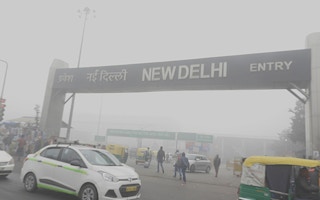India’s Supreme Court has called on Delhi authorities to swiftly address alarming air pollution levels — levels deemed as harmful as “smoking 20 cigarettes in a day”.
“Take immediate control measures. Tell us how we can reduce [the Air Quality Index (AQI)] by 200 points,” Chief Justice NV Ramana told the country’s solicitor general.
The AQI measurement in Delhi has reached levels between 400 and 500 in almost every part of the city. A measurement above 50 is considered harmful to human health.
Following the Supreme Court’s ruling, India’s federal administration and several northern states now have 48 hours to submit plans for reducing the AQI.
“If [it is] required, [consider] a two-day lockdown,” Ramana said. “[Otherwise] how will people live?”
A “thick blanket” of smog has covered Delhi for more than a week. The Supreme Court reported that judges were now forced to wear pollution masks indoors, even in their own homes.
The persistent smog is largely a result of cold and still conditions that allow the air pollutants to “settle in” until a wind picks up to blow them away.
The smog comes from several sources. After farmers violated bans on burning crop stubble on farms and residents used firecrackers to celebrate Diwali, AQI levels shot up as high as 627 in some areas. But according to reports in Bloomberg Green, the air pollution is also part of a larger problem, one that can be traced back to India’s heavy reliance on burning fossil fuels for energy.
India’s toxic air pollution levels draw attention to the country’s climate risks and to Prime Minister Narendra Modi’s COP 26 pledges to bring its emissions to net-zero by 2070.
“India has committed to adding 500 gigawatts of non-fossil electricity capacity, half of energy, from renewable sources by 2030, and to increasing its carbon intensity reduction goal — measured as carbon dioxide emissions per unit of gross domestic product — from 35 per cent to 45 per cent, by the end of this decade,” reported Bloomberg.
The judges were critical of a Delhi administration decision to open schools earlier this month in spite of risks to children’s health. They rebuked the solicitor general’s attempt to deflect responsibility onto farmers for agricultural crop burning and pressed the city to address its own emission problem.
“80 per cent of pollution in Delhi is due to causes apart from stubble burning,” said Justice Surya Kant. “What is being done for that?”
This story was published with permission from The Energy Mix.










